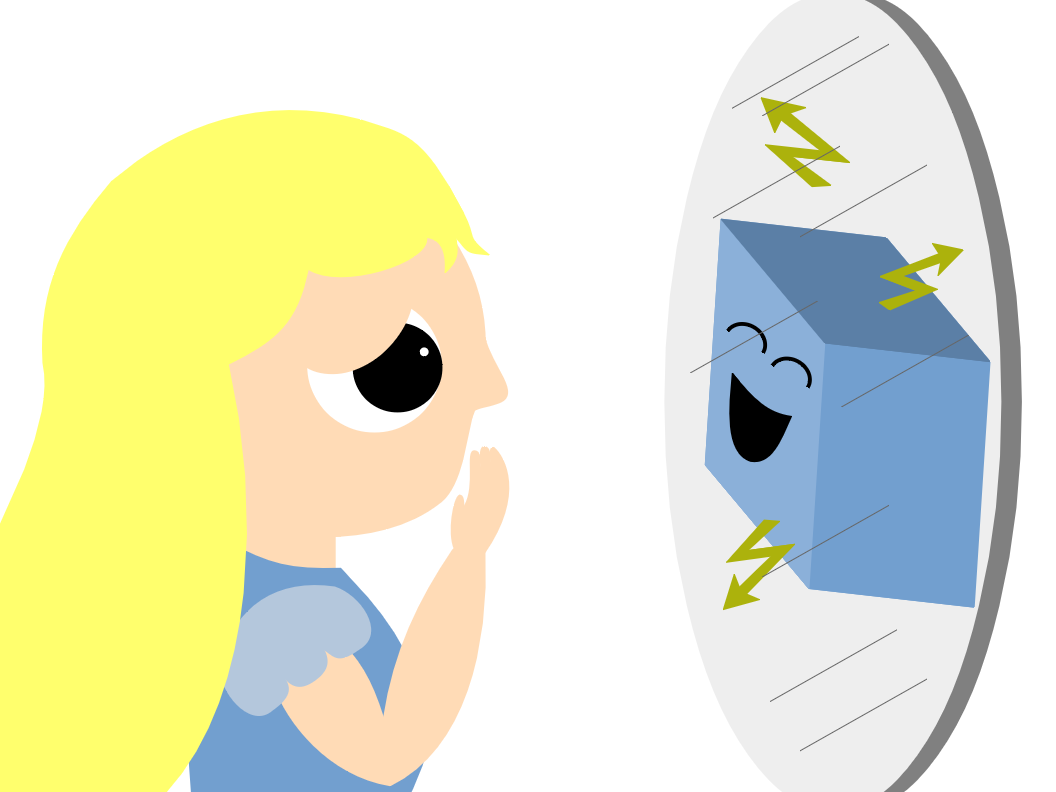
What in tarnation is Machine Learning?
It’s simple! The name says it all. Machine learning is a sub-field of artificial intelligence that focuses on getting machines to mimic the way humans learn. Why? So machines can figure out how to do complicated tasks on their own — without needing people to give them step-by-step instructions.
That’s pretty much all there is to machine learning! So, congratulations, you’re now a machine learning expert!
Okay, okay, there’s a little bit more to it than that. Let’s delve deeper!
Ingredients for Making Machine Learning Soup
Broadly speaking, machine learning consists of three main components: a learning model, a training dataset, and a trained model.
Wait, don’t run away! Come back! These terms are not as scary as they initially appear. Let’s go thru each one:
I. Learning Model:
A model is just math-speak for a representation of something. Think model airplane, model train, etc. So, a learning model is a representation of something that learns. Can you think of something that learns? There is one very obvious example … .
YOU! Yep, thaat’s riight! Since you learn, a learning model is a representation of you —— as well as all other human beings, animals, and anything else that learns.
II. Training Dataset:
Again, pretty straightforward. This is simply data used to train the learning model. Since you’re a learning model, what sorts of training data do you use? You have the obvious stuff like:
- this blog! Woohoo!
- the Interwebs
- your parents
- your siblings
- your friends
- teachers
- school
- your co-workers
- social media
- television
- books
- newspapers
- radio
- magazines
- etc.
But remember, data is any information that tells you about your surroundings — so even these are included:
- the simple act of looking out the window
- the itchy sweater you’re wearing
- the pebble that somehow got into your shoe and has been annoying you all morning
Every day, we’re bombarded with billions of bits of data, yet our minds can process all of this effortlessly and use that information to shape our view of the world! Our brains are amazing, aren’t they?
You know what? We’re amazing!
III. Trained Model:
Similar to the learning model, a trained model is a representation of something that is trained. This is the only tricky term — but solely because of the way we normally use the word trained in our everyday lives. It usually refers to the relationship between two specific kinds of people — like a master and a protégé, a teacher and a pupil, a mentor and a mentee, a pet owner and a pet, etc.
In machine learning, however, trained actually refers to something that the learning model develops internally. So, what do you, as a learning model, develop when you’re learning?
Well, we normally call this stuff — skills. As in:
- communication skills
- technical skills
- math skills
- acting chops
- language acumen
- football IQ
- basketball talent
- know-how
- gut instincts
- common sense
- muscle memory
- and many, many, more
Yes, even common sense and gut instincts are trained models. Common sense is the set of understandings on how to behave properly in society. You develop that via numerous interactions with people from whom you learn the acceptable social norms. The same goes for gut instincts. Say you find yourself on a deserted road, and you get a really bad feeling in the pit of your stomach. Well, that feeling comes from having watched many, many hours of slasher films — teaching you that bad things often happen on deserted roads.
Foot Bone Connected to the Hip Bone,
Hip Bone Connected to the Brain Bone
Okay, let’s see how all these components fit together. Here’s a diagram that lays it out:
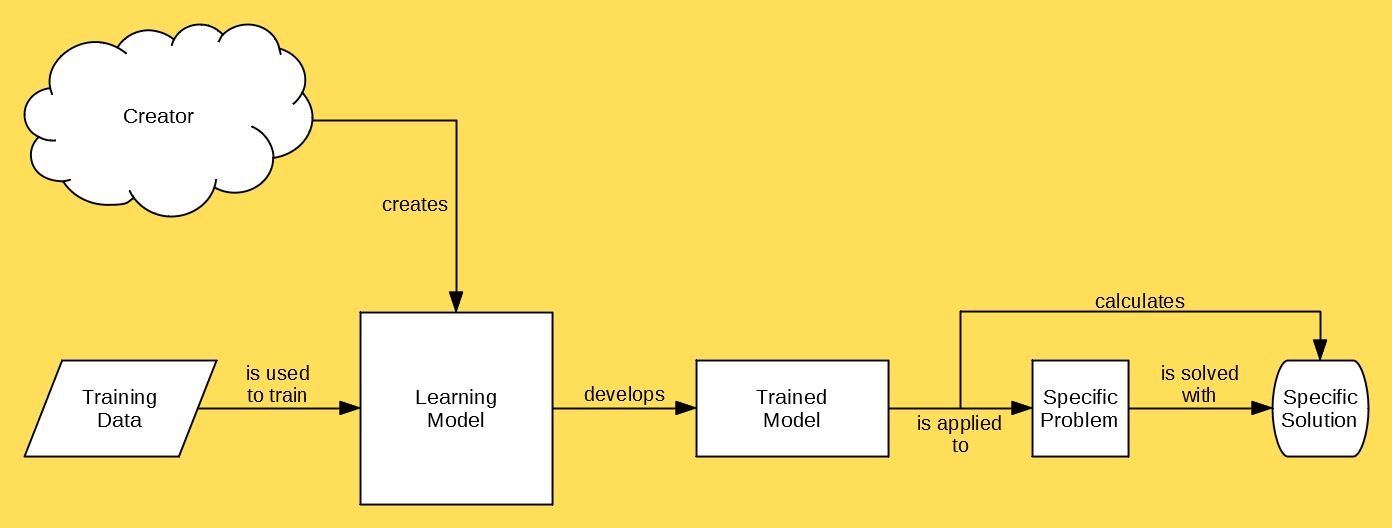
- In the beginning, we have an almighty creator, who creates the universe and everything within, including the learning model.
- The learning model then processes training data.
- With that data, it develops a trained model.
- The trained model is then applied to a specific problem in order to find a specific solution.
Here’s the diagram rewritten in human terms:
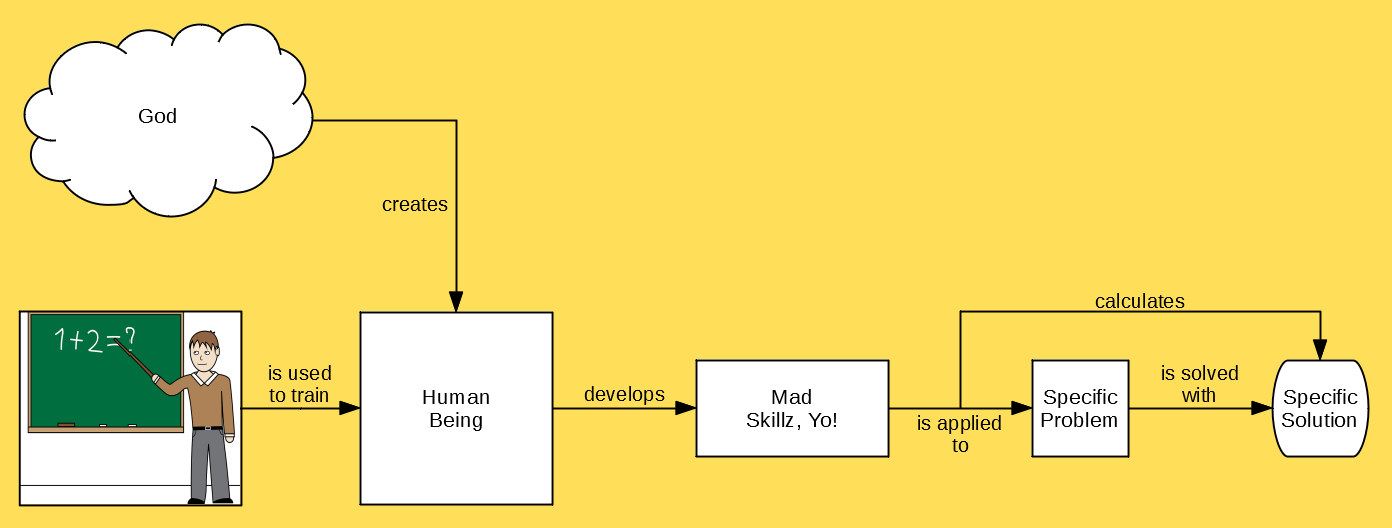
And here’s the diagram rewritten for machine learning:
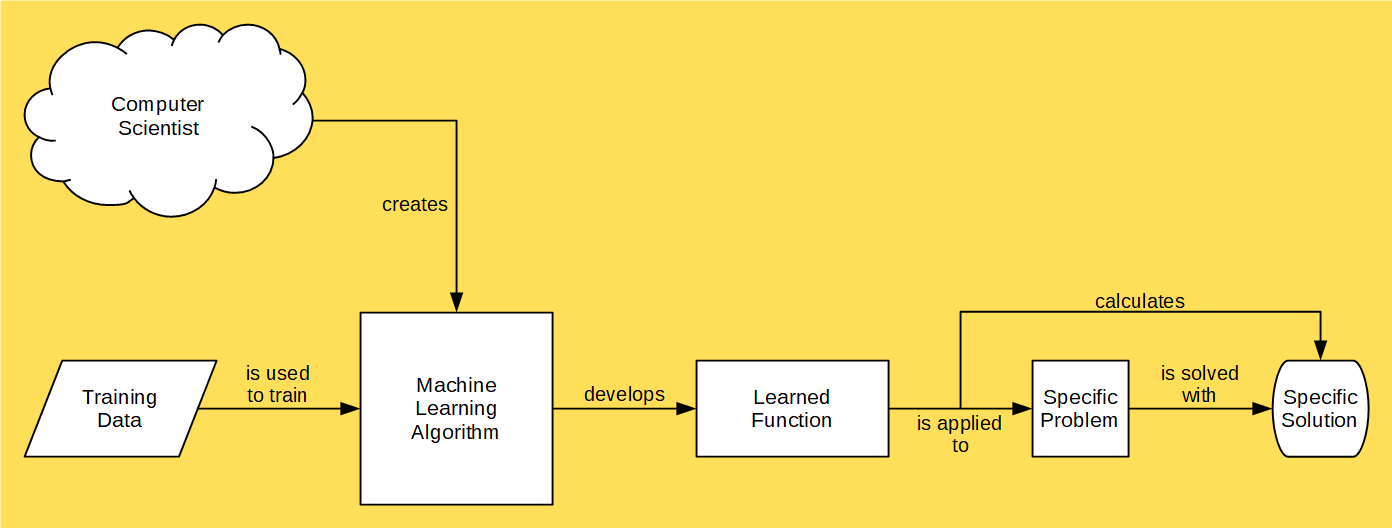
You’re in disbelief. “Hold up! Did you just equate computer scientists to God?!”
Yes. Yes, I did. Isn’t that wonderful? You get to bask in the glory of my messiah complex! I’m so jealous of you right now!
Are You Sure It's Machine Learning? It Looks More Like Snake Oil
One extremely important point to keep in mind is that MACHINE LEARNING ALGORITHMS ONLY PRODUCE FUNCTIONS AND NOTHING ELSE! These functions represent trained models.
This is where a lot of people get tripped up. If you’re working on a so-called “machine learning” project, but don’t produce anything that looks like: TM( ) = ( x * y * z5 ) / ( l * m ) + s * j - 2, then you’re doing something wrong. If you somehow end up with a number, a pretty chart, or anything else that is NOT a function, then I have no idea what the hell you’re doing, but it’s definitely NOT machine learning.
Are We Human?
Or Are We Dance Machines?
To help you get a better understanding of how machine learning works, rather than show you some machine-specific examples, a more effective way would be to look at some human-specific examples instead:
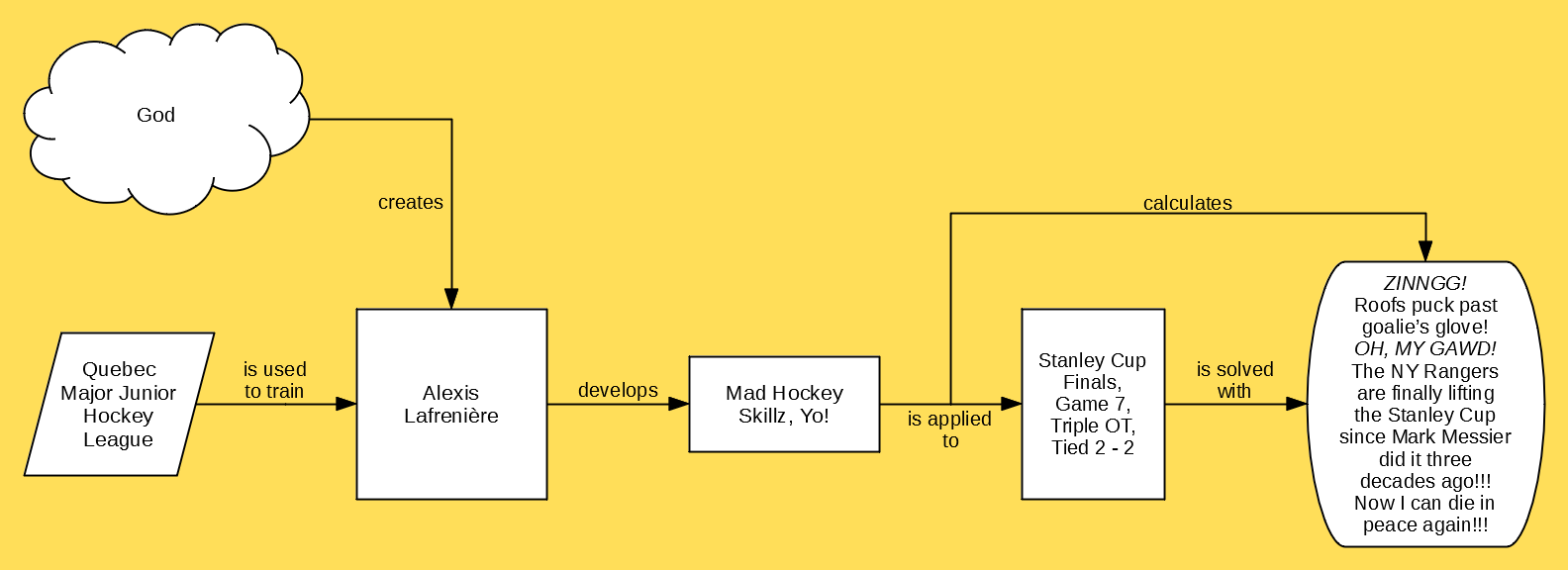
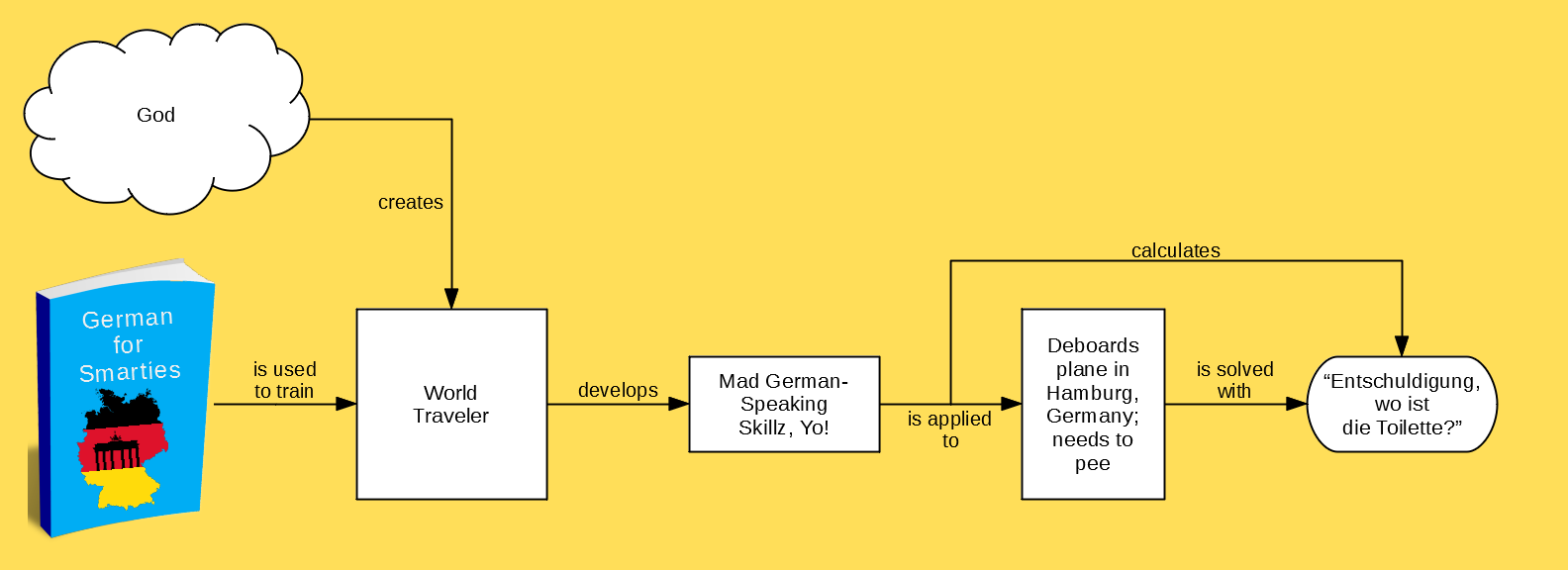
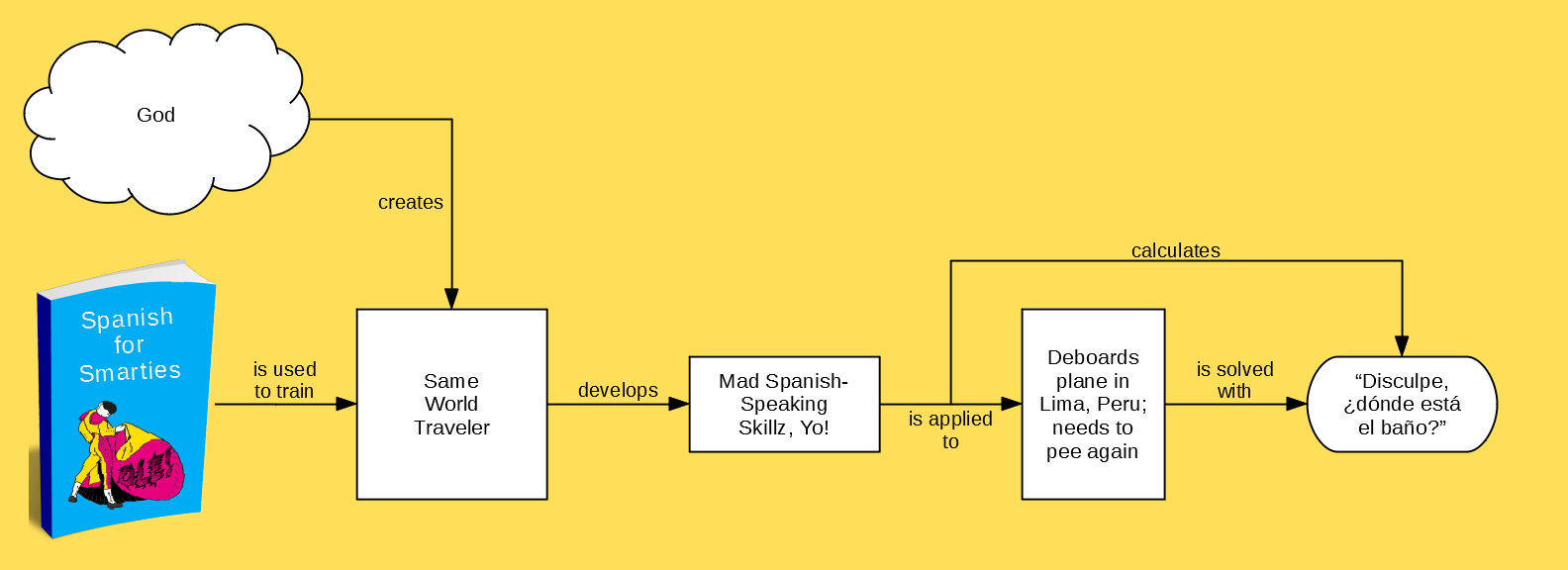
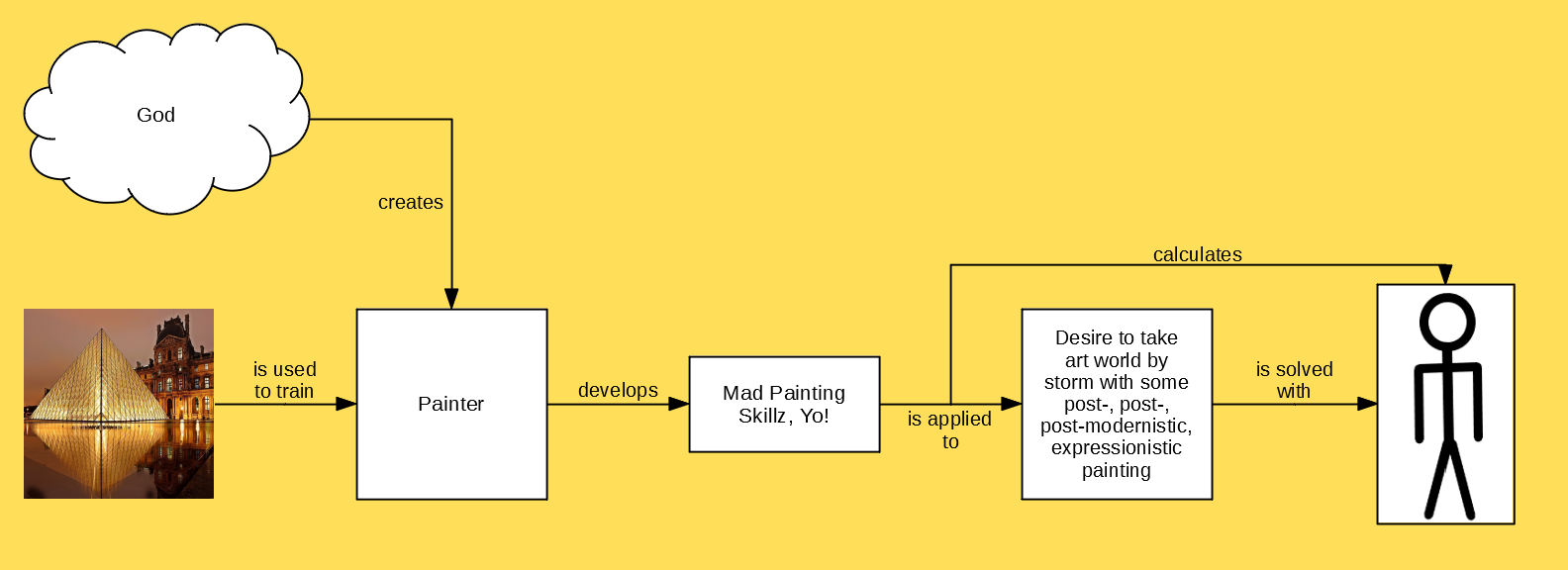
IN THE NEXT EPISODE ... .
If you crack open a machine learning textbook, you’ll see page after page of scary-looking maths. In the next post, I’ll discuss where all them fancy-schmancy equations fit in, and what role the field of statistics plays.
In the meantime, let’s all download a couple of trained models directly into our heads — so we can know kung fu and how to operate a helicopter!